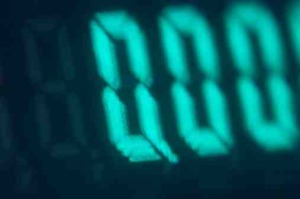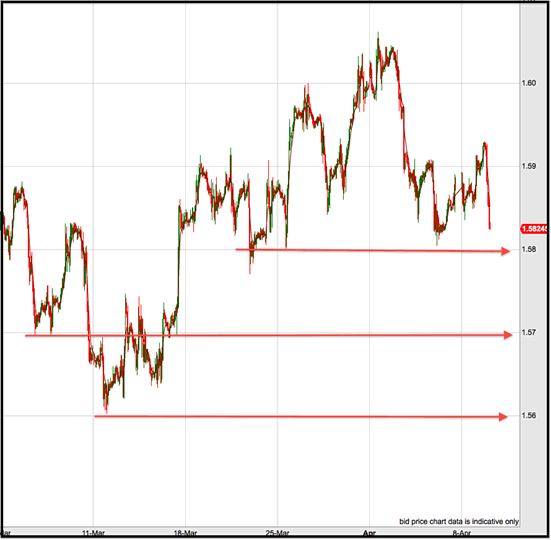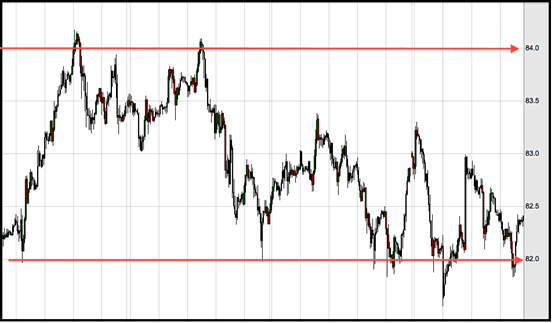 “Rounding off” is an important function of the human brain.
“Rounding off” is an important function of the human brain.
Our brain is a marvelous mechanism for reducing the chaos of a multitude of incoming signals to a meaningful order. And “rounding” is part of this process.
It allows the brain to make sense of highly complex features and events. When we look at a mountain range, for example, rather than only breaking it down into all the minutiae ups and downs – the human brain is able to “round off” and see the bigger picture. Just as the human brain is able to round off the masses of complex information seen in each animal form to recognize different species.
The process of rounding off has helped the human species for millennia, from solving complex scientific principles, to recognizing which animal to hunt for dinner.
And we do exactly the same thing when we’re faced with the complex array of numbers we see in trading.
Which is why, we’re naturally drawn to the simplicity of 1.3000 instead of 1.2876.
The lure of round numbers
In trading, this rounding process has a significant effect on price action.
Traders instinctively place orders and stops around these levels, which means that prices are drawn to these round numbers, and then bounce off them.
Since their woes began back in 2010, BP shares have struggled to break 500 pence …
We saw the FTSE bouncing neatly off 6000 last month …
The Dow Jones has been under the spell of 13000 for much of this year …
And crude oil has had a long-term love/hate relationship with $100/barrel.
But probably the place where we see round numbers really working hard is in the forex markets, where there are no earnings reports and calculations affecting the price levels – just pure market sentiment.
Which is why I’m going to focus my attention on looking at round numbers in forex
1. What exactly are round numbers?
When it comes to round numbers, there’s a clear hierarchy …
Parity: Top of the round-number chart is parity, when two currencies are evenly matched at 1.0000. It doesn’t occur very often in forex charts, but has been seen this year on USDCAD and late last year on AUDUSD. This level is hugely significant and can take months to be breached.
The thousands: Next is round numbers to one decimal place (thousands of pips), for example 1.4000. These are obviously far more common than parity, but still act as crucial levels for support or resistance.
The hundreds: Next is the much more common round number to two decimal places (hundreds of pips), such as 1.3400. These are seen every day, and will often be the most important reference areas for how the market will play out for a given session.
The fifties: We then drop down to key levels in between, such as 1.3450.
The tens: Finally, the weakest round number is the tens, such as 1.3410, 1.3420 and so on. These are obviously the weakest of the round numbers.
Traders will say stuff like, “If GBPUSD falls to 1.5600 [or 1.5700 … or 1.5800…], I’ll start buying.”
And the effect this kind of talk has on prices is written all over our charts …

Round numbers are among the most important and predictable levels of support and resistance.
And – as ever – if we have some knowledge about where markets are likely to move to and turn – we should be able to use it to our advantage.
So, here are some simple ways you can do just that …
2. Give round numbers a wide berth
Because many traders will place their stop losses or their open orders around round numbers, we should be careful to avoid getting snarled up in all these orders.
The key question is: how many pips away from a round number is safe?
It’s one of those “how long is a piece of string?” type questions. And the answer depends on the volatility of the instrument … the importance of that round number … what’s driving the price … and, what traders ate for breakfast that day …!
There is no exact answer.
But – be warned – the bounce off a round number won’t always happen where you think it’s going to happen. Most traders are smart enough not to stick their orders bang on 1.300. Instead, they put them a few pips the other side – so the bounce often happens on what you’d thought was the “safe” side of the round number.
Take a look at USDJPY moving between support and resistance as the 82 and 84 levels over the past month …

Often the price is finding support or meeting resistance just beyond these key levels, and traders with their stop losses placed just a couple of pips away, will have them knocked out.
As with all support and resistance levels, it is more useful to think of them as areas on the chart, rather than exact lines.
3. Use round-number momentum
Let’s look at what we know about round numbers …
Most traders will place their stop losses just above resistance at a round number or just below support at a round number.
And, because so many traders place their orders near to round numbers, there’s a lack of other orders around them. The result of this is that there can be very little support and resistance around round numbers, which means that prices are driven quickly and with momentum to these key levels.
And then, once they’ve hit the round number, the price can be buffeted this way and that, as it hits all the orders that are congregated around it.
So, how can we profit from this knowledge?
Stop-loss hunters will use scalping techniques at round numbers to profit from these small dynamic moves. And it’s these people who are rubbing their hands in glee every time we don’t put our stops quite far enough away from the round number!
I’ll write more on these scalping techniques in a future post.
